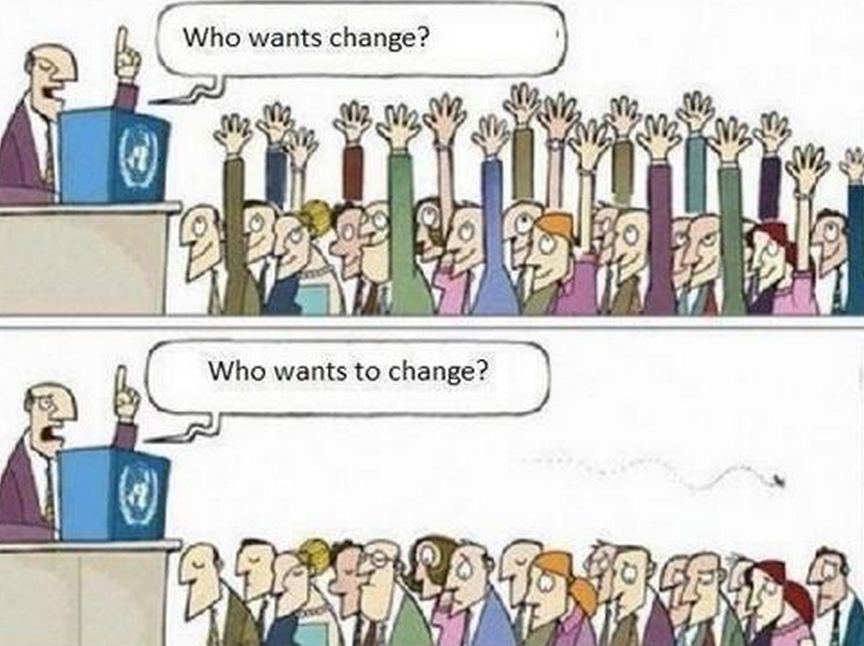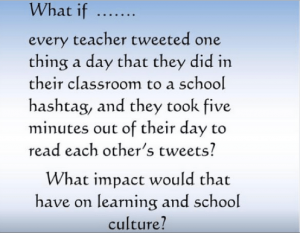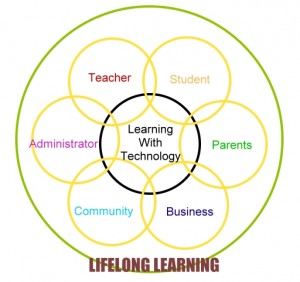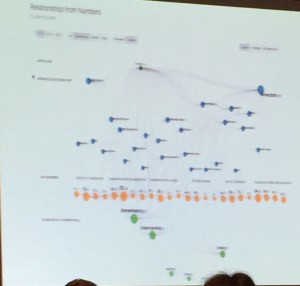What is the reason that teachers stay?
Seriously. I am curious. Is it the summers? Is it the feeling we find when a light bulb goes off for a student? Is it the “maybe next year it’ll work” mentality?
I don’t know if it is the case in other professions, but teachers complain. A LOT. We complain about the number of hours we work, we complain about the salaries we deserve, we complain about lazy students not doing their job, we complain about administration not being there for us, and we complain about the whole education system going to hell in a hand basket.
 Many, if not all, are totally justified, but …then what? Where do we go from there?
Many, if not all, are totally justified, but …then what? Where do we go from there?
People on the outside see this complaining and have plenty of other things to say about teachers; administration could look at it and make arguments about the budget or bring in professional development to “help” manage time and teach new strategies. These too are also well founded and have their importance.
What I Enjoy About Teaching
1) Teaching is creative
If I was stuck in a cubicle all day doing the same thing each and every day I would die. The chaos of teaching, I think, is also one of its greatest strengths. There is no “one way” to teach a child or share an idea. Instead we struggle each and every day to find a new, creative way to get little Johnny to class on time, Sarah to share her thoughts on the civil rights movement, and Shauna to argue her reasoning about a mathematical formula.
2) Teaching is collaborative
…or at least it should be. In my job I collaborate with other teachers all of the time. We compare results, we develop curriculum, and we share assessments. The most important aspect of our collaboration is our professional growth. Collaborative conversations force us to be reflective and we stretch our thinking by combining the thoughts of two to four minds that all see a situation through a different lens.
3) There is room to grow and pave new paths
Any teacher can tell you that you they are always learning – about content, ways to teach content, methods to deal with behavior, or even ways to communicate with peers. The real exciting part, though, is that 21st century learning is basically untamed and WE are the ones that will shape what the next 50 to 100 years of teaching and learning will look like. This is what motivates me each day and excites me as I fall asleep at night.
So that brings me to the question…how do we keep teachers? There are definitely some awesome things taking place in education, but at a certain point the stress outways the perceived benefits.
Reasons I Can’t Make Teaching A Life-Long Career
1) I think I can make a bigger difference doing something else (administration, research, non-profits, private sector)
As a teacher I affect 150 or so kids that are in my classroom throughout the year. Add that up and over a career of over 30 years that means I will have had 4500 or so kids that crossed paths with me and I was able to affect hopefully for the better. Tally in extracurriculars and other staff, maybe somewhere around 6000 people. The thought always bounces around in my head, how can you do more? A principal affects an entire school and hundreds of teachers during their tenure. Researchers and new ideas can radically change the course of education, and outside groups often have more money and freedom to work on projects devoted to any passion ready to be pursued.
2) Which direction is up? – Money
I do nearly the same job as other teachers in the school and just because I have been teaching less years I get paid thousands of dollars less? I totally understand paying teachers for experience and the wisdom/ leadership they bring to the school, but as a young teacher “trapped” in some pay scale based on years teaching and possibly if I received a masters (which is a whole different blog), I have no reason to be motivated and no stars to shoot for. Luckily, money is not the reason most people get into teaching.
3) Which direction is up? – Leadership
There is a ceiling in teaching when it comes to leadership. As a young teacher, I try to be like a sponge, absorbing as much information and many good practices as I can from experienced educators in my building and through blogs/ twitter. Eventually I can be more of a leader, possibly a mentor some day, and even end up as a curriculum/ department chair if I play my cards right somewhere down the line.
What doesn’t sit well with me is that all of these jobs are really the same thing! The next 30 years of my life and career would be devoted to…the same thing with a few things added here and there – all of which are added on top of the regularly expected hours of teaching.
So then, why do teachers stay? Or even better, how to we get more teachers to stay, while at the same time attracting more teachers to the profession? I will offer my thoughts and encourage you to do the same by commenting or sharing your thoughts via twitter.
Educators do not equal teachers.
My thought is simple to write and tough to do.
When I am hired and employed by a school district, I am expected to teach children. I am expected to make sure that kids take tests and that they pass. There is a lot that goes into it including caring about kids, conversations about them and with them, evaluations of our own, and forms to fill out for the state.
Almost never, though, do people expect teachers to receive a paycheck for learning or for sharing their work with others. Stay in your classrooms, society says, and teach our children. That is what we pay you to do.
If ambitious teachers are expected to stay in education it is absolutely necessary that they have the room to grow. I’m not talking about slow change, the kind that takes 30 years; I am talking about the kind of “I have a dream to change the realm of education” growth. We need to be given the tools to be able to test out our ideas, fail, and learn, all the while knowing that we are supported. When we have ideas that work we need time to share them with people – I mean actually share them at a deep level and have time to meaningfully see the ideas through.
- pay teachers to watch other teachers teach (within and outside of the district)
- pay teachers to research best practices (twitter, blogs, provide them with research & guidance)
- pay teachers to help other teachers learn
- make time for teachers to share their ideas to other staff members
- make time for teachers to share ideas to other districts
Some of this districts do, but it is usually on top of a regular work day. I teach six classes and I’m not about to be taking on more. Instead, we need to count research/ learning/ sharing as part of the work day. If you want good teachers to be good you need to give them time to learn, practice, and most importantly share what they do.
These are just a few of my thoughts. I would love to have a conversation with anyone about these ideas. Let’s figure this out. What does it take to keep a teacher?





 Many, if not all, are totally justified, but …then what? Where do we go from there?
Many, if not all, are totally justified, but …then what? Where do we go from there?